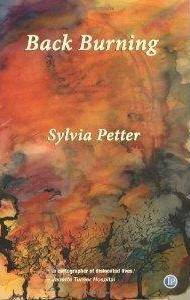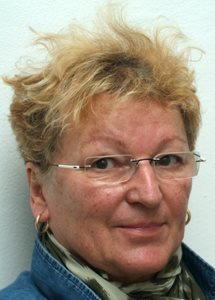1. Who are the short fiction authors you admire (Australian or otherwise, alive or dead)?
Roald Dahl, Alex Keegan, Edna O’Brien, William Trevor, Janette Turner Hospital.
2. What is the most memorable short story you have read? And why does it stand out for you?
Several short stories resonate for me because they touch something perhaps buried, acting a little like smells that bypass language, and through an image, a mood, an ‘aha’ moment, go straight to work on the subconscious, and leave me thinking.
Some of these are: “Love’s Lesson” by Edna O’Brien, “Genesis and Catastrophe” by Roald Dahl, “A Bit on the Side” by William Trevor, “Spectacles, Testicles, Wallet & Watch” by Alex Keegan, and “Litany for the Homeland” by Janette Turner Hospital.
3. What do you like about the short story form?
I think the main thing I like about the short-story form is that a good short story is much more than the sum of its parts. I like how it can trade on images and associations, how it can include the reader by opening itself up to interpretations.
4. How would you describe your own writing?
My writing is a bit all over the place and I tend to have a cruising speed of under 2K. I often become conscious of different levels in my stories through feedback from readers. I like to play with words and go from nonsense to serious and back. I tend to write about relationships tinged by political issues.
5. Which of your stories are you most fond of right at this moment and why?
I’m very fond of a story I just completed for an anthology which should be launched at the International Conference on the Study of the Short Story next June. An idea had been in my head since August, but it was only a few weeks before deadline that I was able to get the story together. I sent it off to an editor for feedback – I guess I needed a confidence boost as it was my first commissioned story – and then I worked on it a little more, always fearing that I might break it. I’m pleased with it. It’s called “Anna’s Flags”.
6. Where do the ideas for your stories come from? (Take us through an example)
My ideas come from anywhere, a smell, a sound, a conversation overheard, someone I notice, something I’ve seen in the paper or on the internet. My story, “The Burka”, a finalist at Red Room and subsequently published in 100 Stories for Queensland and Offshoots 11 – Writing from Geneva, started with my seeing a young woman in a burka at my local tram stop in Vienna. There’s been a fair bit of debate about the garment in Austria and so I wondered about the woman beneath it. My protagonist is a woman in a burka, an artist who, in an old Viennese café, asks a man if she can have his old tea bag. Once that question was asked, the story came together, basically through dialogue. There was a lot of tweaking. I’m always scared of breaking my stories with too much fiddling. I let it rest for a while, then sent it off.
7. What is your writing process – from idea to publication? (Do you go it alone or are others involved?)
I usually jot things down in a hodgepodge of a notebook. Then I scribble the bones of the story in the same book – I use school exercise books because they let me muck around. When I think I may have something coming together, I type it up, revising as I go. Then I let it rest for a while, get other ideas, go back to it, until I have something reasonable. I’m always struggling with structure, so at that point I’ll send it to a trusted writer friend for a gut reaction, no more. Then I revise, revise, revise. (With my latest story, I sent my almost final version off for a (my first) paid critique by a writer/editor I met on Facebook. I’d seen that he was respected and that his editing helped finance his life as a writer, so all was good.) Then time to submit and cross my fingers until I’ve forgotten it’s out there. When rejections come in, I try and work out why. But mostly I wait and see if another market comes up and submit again somewhere else.
8.Do you feel the short story form is valued in Australia? What makes you say this?
I don’t think the short story is really valued yet in Australia. Maybe this is because it isn’t promoted by publishers. Short story collections seem to fly better on the back of a novel. Although the form allows a story to be read in less time than a novel, good short stories make you think, some even gnaw at you, and many readers don’t seem to want that, and would rather escape into a big fat book. A lot is happening in Europe, to promote the short story and flash fiction seems to be becoming established as a new sub-genre. Developments in digital publishing, I think, will help the short story genre gain more readers.
9. How do you feel about your work being published in non-print forms such as digital and audio?
I started writing fiction in the early nineties and have been publishing in online literary magazines since 1995. Gangway in Australia and Southern Ocean Review in New Zealand were two of the first places to take my work. My first collection of stories, The Past Present, came out as an e-book in 2001, and my latest collection, Back Burning, published by IP, Australia, is available on Kindle. I also have several stories on mobile publishing with Ether Books in the UK, and a couple are included in podcasts, one at IP and another in the US. I write to be read, and different platforms let me reach out to a variety of readers.
10. What advice would you like to offer Spineless Wonders?
Accept rejections as a necessity on the road to publication. Learn from them. Write, write, write, revise, submit. Persist. Support other writers.

